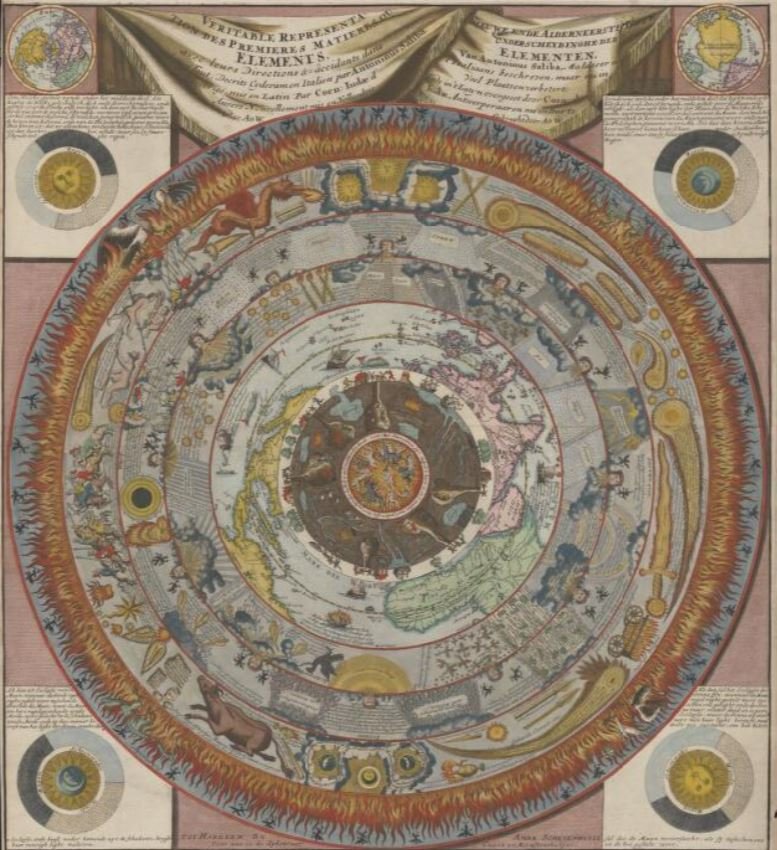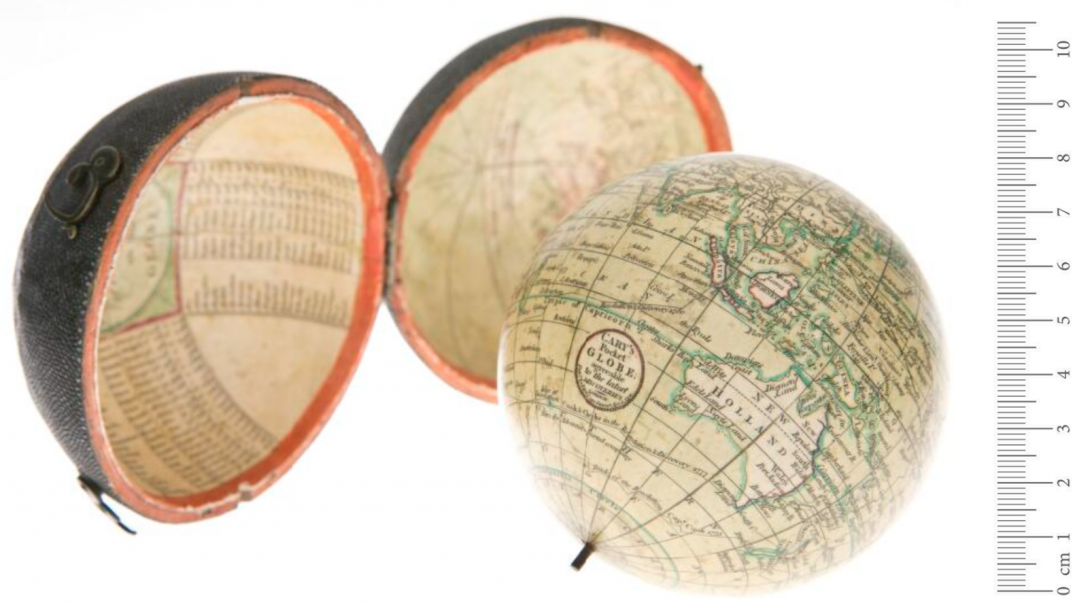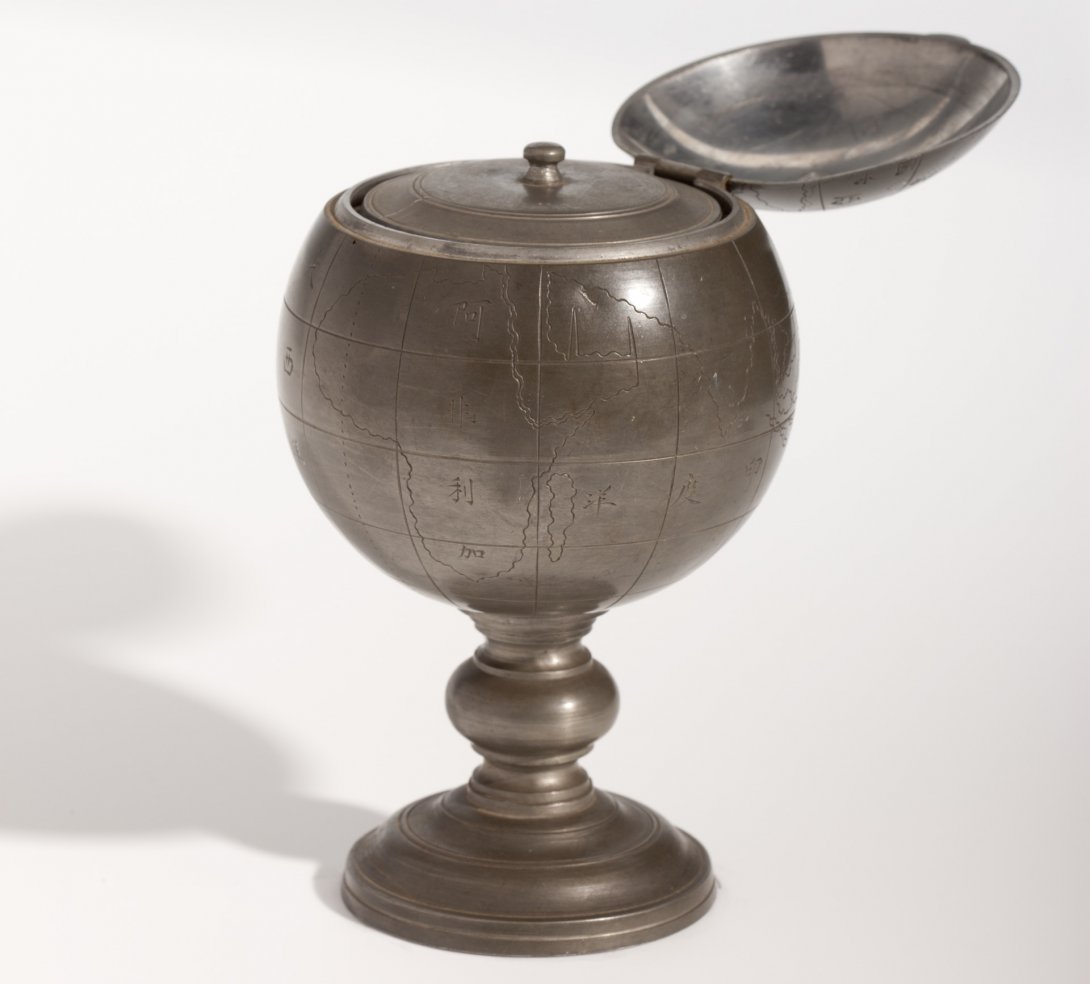The Library's maps collection covers Australia, the world and beyond. Made up of around one million maps that are rare, significant, informative, beautiful or all of the above, there’s so much to explore and learn. Enjoy a glimpse of this extensive collection.
Into the cosmos
To begin, we’re heading out into the cosmos with the Schevenhuysen Map: a rare, hand-coloured copperplate engraving printed in Haarlem at the end of the Dutch Golden Age by Ambrosius Schevenhuysen.
This spectacular cosmographical map depicts Earth in circular layers with Hell at its core. It includes miners, comets, war, lightning, rainbows, the sky, the sea and more.

Learn more about the Schevenhuysen Map.
The whole world in the palm of your hand
Measuring at just 8.3cm in diameter is Cary's pocket globe agreeable to the latest discoveries, one of many “pocket globes” in the Library’s collection. First created over 200 years ago, these small globes, often between 7-8cm, were intended to be used as teaching aids, conversation starters and when discussing the latest explorations overseas. This globe, like many others, was kept in a sharkskin ‘shell’ that would protect it when being carried in pockets or purses.

A beau-tea-ful globe
Just above the standard size for a pocket globe is this pewter Chinese tea caddy globe made during the late Qing/early Republic period. At 10cm in diameter, and almost double that when accounting for the stand, this globe may not fit in your pocket, but it’s a great spot for keeping loose leaf tea. According to Chinese tradition, pewter was thought to eliminate metallic overtones in your favourite brew.

Globetrotting gastronomy
Foods and drinks, such as tea, are also the subject of many maps. For example, you can learn about the history and value of tea in this map entitled ‘Tea revives the world’.
Or, visit one of the most famous countries in the world for food and wine and check out the Carte gastronomique de la France (Gastronomic map of France). In this map, you can learn about wine and beer production, crops and local specialties around the country.

1920s Australia
Moving back home to maps of Australia, there is much to be seen in the New Oxford Wall Maps of Australia. Showing the distribution of things such as population, cattle and minerals, sheep and wheat and vegetation across the country as they were in the 1920s, these fascinating maps are a great point of comparison to today.
![Taylor, Thomas Griffith & Beckit, H. O. (192-?]). The new Oxford wall maps of Australia A 1920s map of Australia showing distribution of cattle and minerals](/sites/default/files/styles/wide/public/cattle_map_for_banner.jpg?itok=9Q9ojW1N)
Finding farms
Speaking of sheep and cattle, pastoral maps are a great resource for family historians who know of family members who worked on or owned livestock farms. You might not notice at first glance, but they also often contain indexes to series mapping. In the pastoral map below of Western Australia, you can see the index for the 300 chain cadastral series, which are available to view online in Trove.

You can learn more about how land was used using parish, town and county maps.
Where will our maps take you?
This only scratched the surface of our maps collection; explore more through the catalogue.
Not sure where to start but keen to learn about how you can find and use maps in the Library’s collection? Check out our research guides about Australian maps for family historians, Australian topographic maps, British and Irish maps for family historians, and overseas series mapping.